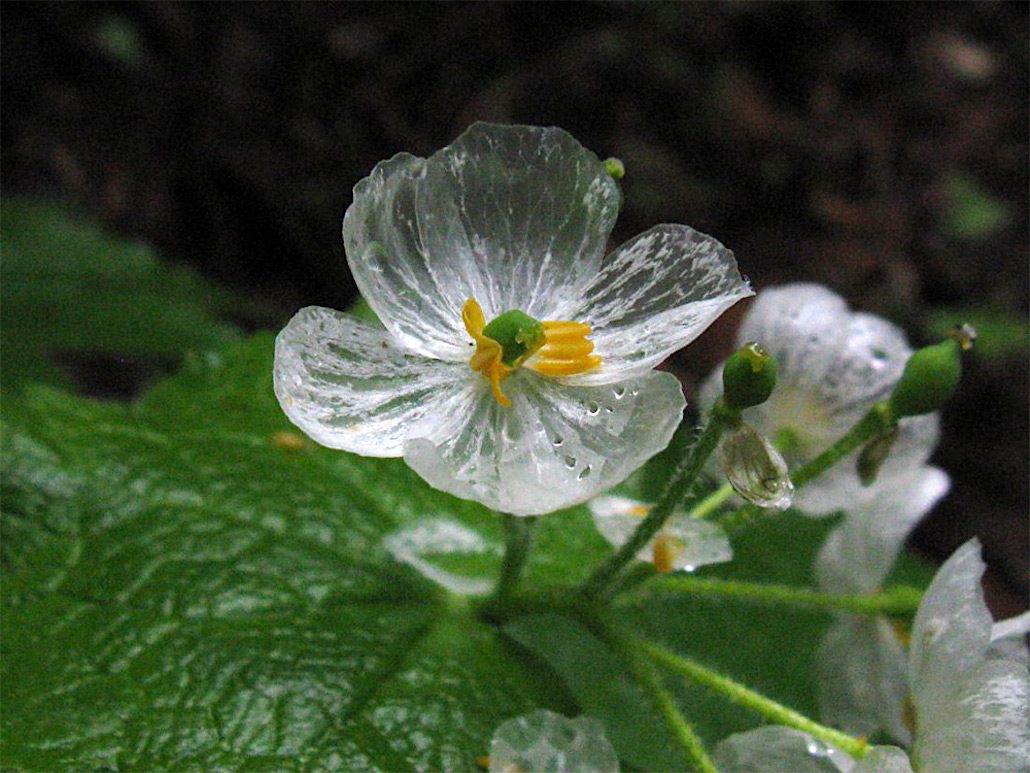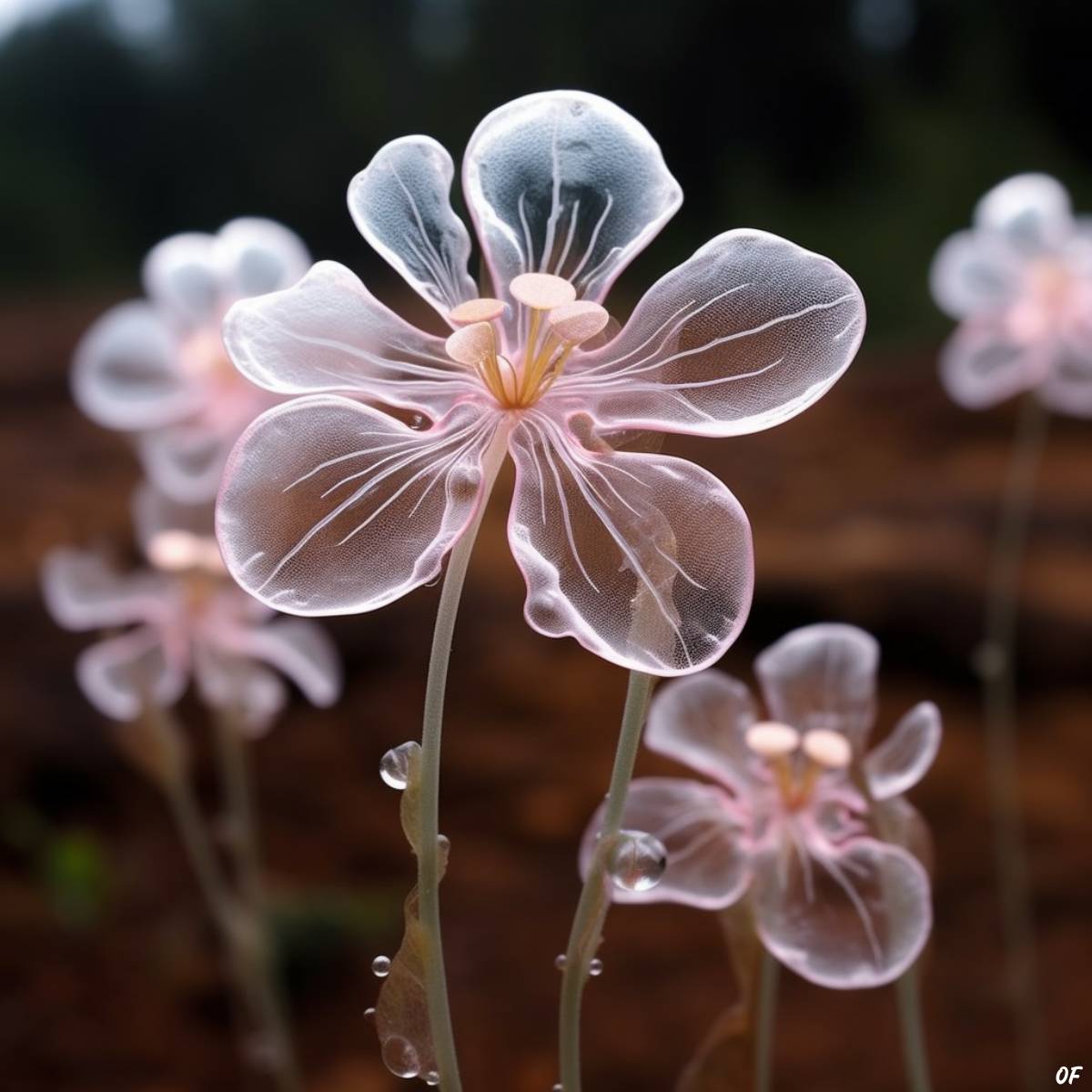There is a unique bloom whose beauty exists as much in its allure as in its intriguing anatomy—the Diphylleia grayi. Dubbed the “skeleton flower,” this perennial wonder, breaks away from the norm with an enchanting botanical performance. Its delicate, pearly-white petals undergo a remarkable transformation in the face of rain, morphing from opaque to a mesmerizing crystal clear that is a marvel of nature’s design.
When kissed by the moisture of falling rain, the petals of this unusual flower surrender their snowy hue to become stunningly translucent. The blossoms thus reveal an intricate network of veins—thin, almost spectral lines that dance across each petal like a skeleton’s frame, giving the flower its eerie yet fitting moniker, “skeleton flower.” This astonishing transformation exposes the usually hidden, intricate patterns and delicate structure of the flower in a way that is poetic in its transient beauty.

A spectacle only witnessed in the right conditions, this performance is ephemeral, lasting only until the petals dry and regain their original opacity. Yet, the memory of this extraordinary phenomenon—this dance between a flower and the elements—continues to captivate those fortunate enough to bear witness. Whether you’re a botanist, a gardener, or a lover of the world’s wonders, the Diphylleia grayi, or “skeleton flower,” is sure to capture your imagination.
Nestled among the verdant landscapes of Japan, China, and the Appalachian Mountains in the United States, the skeleton flower, a resilient perennial, carves its niche on the cool, dampened slopes of wooded mountainsides. It is here in these serene terrains that the plant emerges, reaching upwards to a modest height of nearly 16 inches (approximately 40 cm).
In the season of late spring, the flower commences its performance. As the seasonal rains drench the landscapes, the flower awakens. The plant unfolds its broad, umbrella-like leaves, forming a protective canopy over clusters of delicate, white petals nestled underneath.
The magic, however, truly begins as light rain showers mist over the blossoms. Gradually, the flowers surrender their milky pigmentation, yielding to a beautiful translucency. The petals, in their newfound clarity, now mirror the shimmering transparency of raindrops themselves, creating an ethereal spectacle reminiscent of delicate crystals.
This transformative dance is fleeting, temporal artistry sustained by the whims of weather. As the petals dry, their clear state recedes, and they return to their original, snowy color. This magical transition, from white to transparent and back again, speaks to the dynamic wonders found within nature’s repertoire. It’s these moments of ephemeral beauty that remind us of the poetic intricacies threaded within the world around us. The skeleton flower, in its subtle, quiet way, stands as a testament to this ever-evolving tapestry of life.


